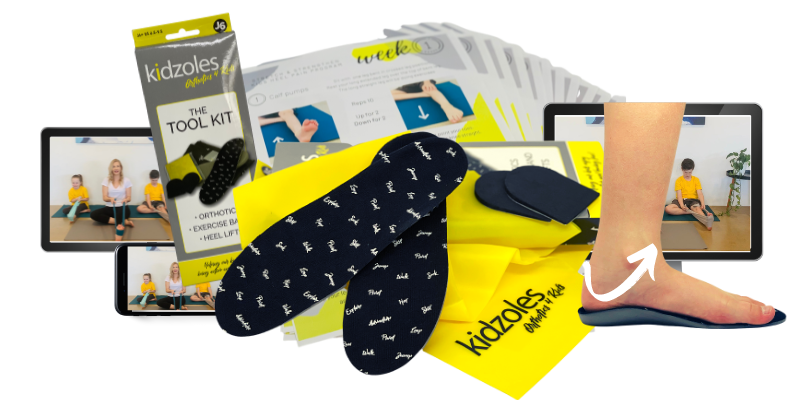My child is complaining of sore heels
My gorgeous friend contacted me during the week about her little girl. She is 8 years old and she is getting sore heels. Even without looking at her feet I had a pretty good idea, with the level of activity her little girl does, what may be the root of the problem. It also made me think………. time to write a blog about children’s heel pain. I’ve told my friend to implement what I’ve included below as a great guide to helping her daughter be pain free.
Between the age of approx 7- 14 years of age many children will experience heel pain. The pain is generally at the back of the heel, not beneath it. It’s a condition named Severs disease, but before you worry it is not a disease they have contracted, its a disruption and trauma to the growth plate at the back of the heel bone.
You see all of our bones start off with growth plates. These are areas where bone growth develops from and determines foot bone shape, size and density up into adult hood. As we get older growth plates will fuse over to form a solid bone. The last of these growth plate fusions generally correlates with the end of foot size, shape and contours. For girls we see the final stage of growth being approx 16 years of age and boys approximately 18 years of age.
Why Heel pain occurs & What you can do to help your child.
Severs disease or Calcaneal Apophysitis are both Medical diagnostic terms for this cause of Heel Pain. Over my 19 years of working closely with children in our Podiatry practices I’ve noticed consistent cause. Severs heel pain will appear in our kids most commonly in the following two environments.
1) You have on your hands one super active child! These are kids that are just outside at every opportunity participating in sports, running, jumping… if its active they are immersed in it! That is fantastic…. but in the case of heel pain, the high level of activity alongside a poor foot position may cause the growth plate in the heel bone to get traumatised. It can occur in one or both feet, but generally their dominate side (the side they write and throw with) will be the most affected.
2) Poor flexibility. Eek here is that flexibility issue again…. starting to notice a theme in these blogs. That is because it is super important. Tight hamstrings will effect the hip position…but also the foot position. If your child has tight calf muscles alongside tight hamstrings, this becomes ideal conditions to cause growth plate trauma.
The heel bone has two main attachments through the achilles tendon and plantar fascia. They almost join through a periosteal sheath around the back of the heel bone. It’s through here that a compressive force trauma will enter the growth plate as our child run/jump around.
To check for Severs in your child you can squeeze the back of the heel bone from side to side with your thumb and index finger, or the palms of either hand pressing from each side of the heel. That squeezing will generate the most pain as opposed to lightly pinching the Achillies tendon itself. Your child may also find it painful and difficult to rise up on to their tippy toes.
So the Good news first. Severs is generally self limiting. Meaning that when the growth plate heals over(around 14/15 years of age) they will no longer get pain in the bone.
The bad news, unless you intervene and help them out in the meantime heel pain can stop your child from loading on their feet.
How to help a child with sore heels.
Heat is better than Ice at providing relief and helping the heel get better. Heat will draw blood flow to the heel bone and encourage repair. You could use a heat pack, heating creams like deep heat or a hot water bottle. Apply for 10 minutes
Insoles and Heel Lifts - these work to change the load entering the growth plate. Be aware of insoles that are too compressive and soft. While they may feel instantly soft they do little to change the mechanics of the foot and ankle to assist long term relief
Strengthening and stretching - a podiatry/physio staged programme works well to develop stronger muscles and transfer load out of the heel bone
Strapping - strapping techniques are great to instantly provide relief for a sore heel and help out during sports. Check out our instagram page for an info video on strapping sore heels.
Below is a free ebook for parents of kids with Heel Pain. It has a heap of info on exercises you can start, footwear and much more. You can get a copy emailed to you by clicking this link below.
If you already have a diagnosis of Severs for your child and are looking for a Podiatry online program. I have developed the Heel pain program for kids. Which has staged weekly exercises alongside the load reduction kidzoles tool to help. Just click here to learn more.



